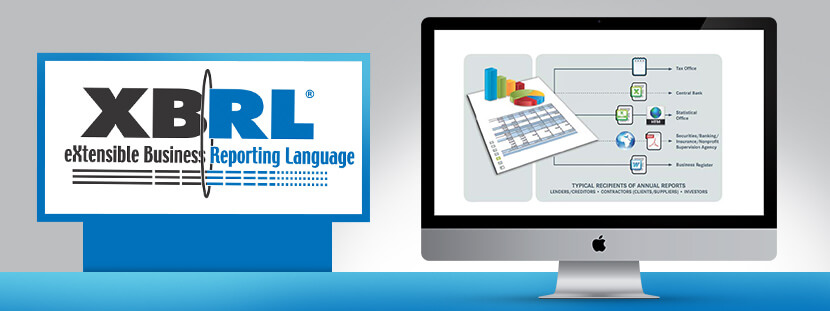The business data generated by a company in a year is massive and this data was put in plain text previously. This made the reporting and analysis procedures both slow and inconvenient. XBRL filing is operative in more than 50 countries and has replaced the traditional methods of business data filing.
This blog covers the general myths that surround XBRL-based financial documents. Stick with us till the end to know how these myths are debunked and what makes XBRL a convenient format.
Keep scrolling!

What is XBRL?
XBRL stands for eXtensible Business Reporting Language. Being one of the members of the XML (eXtensible Markup Language) format, XBRL is an open international standard used by companies to file their business related data for reporting and analysis. It generates electronic documents for business communication between the companies and the regulating bodies.
It is mandatory for all business organizations worldwide reporting to their respective nation's designated government bodies to submit their business data in XBRL format. For instance, the Securities and Exchange Commission (SEC) and the Ministry of Corporate Affairs (MCA) in India.
Why is XBRL format important for financial reporting?
Financial reports are huge. As industrialization reached its apex, the number of businesses registering with government agencies increased as well. As a matter of fact, it was discovered that preparing and analyzing financial reports had become difficult to work with.
The dialect and tags (also known as XBRL tagging) of the XBRL format make it a robust way to transfer business data. The XBRL files need viewer tools to view them. This data can be easily converted to .xls format as and when needed.
This XHTML-based format comes with defined standard financial statement items (XBRL taxonomy) with standardized currency and time. The benefits of XBRL includes:
- Cost-effective
- Automated and accurate data handling
- Allows creation of business rules
- Multilingual support
- Improved report analysis
Debunking the myths about XBRL financial documents
Read ahead to know more on importance of XBRL conversion services
Myth 1: XBRL filing is easy to tackle
Filing financial statements in XBRL format has been made mandatory, and it is often considered that XBRL filing is an easy task.
Well the truth is, it is more challenging than it seems! XBRL filing always needs professional input. Understanding the format and the tagging mechanism requires years of experience and expertise.
Only the experts and professional service providers proficient with the use of it can produce high quality XBRL reports. Keep this checklist handy while filing a financial report in XBRL format.
- Knowing to create the correct and required extension. A wrongly created extension will make your reporting intentions unclear.
- Knowledge of the XBRL taxonomy and choosing the correct one per requirement.
- Knowing the minimum tagging requirement and selecting the correct tags.
-
Myth-2: XBRL changes the intent of the report
XBRL is a format to file the company reports. A huge difference lies in “what is reported” and “how it is reported.” Filing documents in XBRL format does not change the intent or what is reported. It rather focuses on “how” the report is prepared.
The statements that are filed fall under certain taxonomies and tags. Choosing them correctly will create the report that is aimed at.
-
Myth 3: Tagging in XBRL is an uphill battle
Not entirely so!
Tagging is labeling the financial data using the most relevant tag (referred to as an element) in the XBRL taxonomy. XBRL documentation undoubtedly needs expertise, but learning the use of tags accurately will make the business easier.
The better you tag your data, the easier the process of analysis will be.
-
Myth 4: Errors made while filing in XBRL can be rectified the next time
Of course, it can be. But, there are review reports generated against the XBRL files of every company on which investors and analysts rely. Low-quality tagging results in the misinterpretation of a company’s information.
Most of the time, the companies unaware of this error keep losing their values in the stock market and investors too.
-
Myth 5: XBRL is a free software
XBRL is an open standard. Open standard means a set of rules and regulations made available to the general public, which can be used to make data exchange and interpretation easier.
Strong and efficient software are needed to develop based on the XBRL format to file, view, and analyze documents. So, XBRL should never be considered a software.
Conclusion
Overall, XBRL has been proven to be a revolutionary approach to business data exchange. But the myths associated with it sometimes make it sound like it’s very inconvenient. Hope this detailed article has helped in busting a few of these myths. We believe readers can now make more informed decisions about converting their business data into XBRL format.
Outsourcing your financial data to efficient XBRL service providers can help you reap many benefits through XBRL filing. So, plan your schedules in advance and reach only the trusted hands. Find yourself an expert digital conversion agency and outsource all your document conversion requirements to them.

Social Media Video Editing